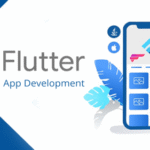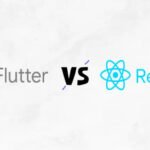Mobile AppFixed Price vs. Hourly Rate: Which Mobile App Development Pricing Model is Best?

Table of Contents
Introduction: Why Pricing Models Matter in Mobile App Development
Budget planning is one of the most crucial aspects of mobile app development. Choosing the right pricing model can significantly impact your project’s cost, flexibility, delivery timeline, and final output.
The two most common pricing models in mobile app development are:
- Fixed Price Model
- Hourly Rate Model
Each has its advantages and drawbacks, and the ideal choice depends on your project’s scope, clarity, budget, and business objectives.
What is the Fixed Price Model in Mobile App Development?
In the Fixed Price Model, the development cost is agreed upon before the project begins. It is based on a well-defined scope, features, timeline, and deliverables.
Key characteristics:
- Predefined project scope and detailed requirements.
- Agreed-upon timeline and milestones.
- Fixed budget with no surprises.
- Payment typically made in installments tied to milestones.
What is the Hourly Rate Model in Mobile App Development?
In the Hourly Rate Model, the client is billed based on the actual hours spent by developers on the project. Rates are usually determined per hour or per day.
Key characteristics:
- Flexible scope allowing changes during development.
- Payment based on time and resources utilized.
- Continuous collaboration and feedback.
- Ideal for evolving or complex projects.
Key Differences Between Fixed Price and Hourly Rate Models
- Scope Flexibility
Fixed price requires a clearly defined scope upfront. Hourly rate allows scope changes during the project. - Cost Predictability
Fixed price offers upfront cost predictability. Hourly rate depends on actual hours, leading to variable costs. - Project Control
Fixed price gives limited control after agreement. Hourly rate offers greater control through continuous involvement. - Timeline Certainty
Fixed price projects follow a rigid timeline. Hourly rate projects may have flexible timelines based on iterations.
Pros and Cons of the Fixed Price Mode
- Pros
- Budget predictability – No hidden costs.
- Defined deadlines and deliverables.
- Suitable for projects with clear requirements.
- Lesser client involvement after contract sign-off.
Cons
- Limited flexibility to change features mid-project.
- Risk of compromise in quality if scope underestimation occurs.
- Longer planning phase required before development starts.
Pros and Cons of the Hourly Rate Model
Pros
- High flexibility to accommodate changes.
- Greater client involvement and control.
- Ideal for projects where requirements evolve.
- Transparent tracking of development progress and hours spent.
Cons
- No fixed budget; costs can increase with complexity.
- Timeline may extend based on iterations and changes.
- Requires frequent communication and collaboration.
Factors to Consider When Choosing Between Fixed Price and Hourly Rate
- Clarity of Requirements
- Choose Fixed Price if project requirements, features, and deliverables are well-defined.
- Choose Hourly Rate if requirements are likely to change or evolve.
- Budget Constraints
- Fixed Price is ideal if you have a strict, limited budget.
- Hourly Rate offers flexibility but requires contingency budgeting.
- Project Complexity
- Fixed Price works for simple apps with fewer features.
- Hourly Rate is better suited for complex, large-scale, or innovative apps.
- Timeline Urgency
- Fixed Price is ideal if deadlines are strict and predetermined.
- Hourly Rate allows flexibility but may result in timeline extensions.
- Client Involvement
- Fixed Price requires minimal involvement post-agreement.
- Hourly Rate needs continuous collaboration, feedback, and approvals.
When Should You Choose a Fixed Price Model?
- When you have a clear, detailed project scope and requirement documentation.
- When budget predictability is crucial and there’s no room for cost escalation.
- For small to medium-sized projects where feature sets are standard.
- When you want minimal involvement after project kickoff.
- When you are looking to launch a simple MVP with defined features.
When Should You Choose Hourly Rate Model?
- When project requirements are uncertain, or subject to change.
- For large-scale, complex projects that require regular iterations.
- When client feedback and evolving market trends need to shape the final product.
- When you prefer agile methodologies like Scrum with continuous involvement.
- For projects involving new technologies like AI, Blockchain, IoT, where flexibility is crucial.
How TechHeaders Offers Flexible Pricing Models to Fit Your Needs
At TechHeaders, we understand that every business has unique requirements and budgets. That’s why we offer both Fixed Price and Hourly Rate models, tailored to fit your project goals:
- Detailed consultation to understand your app idea, complexity, and timeline.
- Transparent pricing structures with milestone-based payments.
- Dedicated project managers ensuring seamless communication.
- Agile development approach under the hourly model.
- Security-focused contracts including NDA and IP protection.
Final Thoughts and CTA
There’s no one-size-fits-all answer when it comes to choosing between Fixed Price vs. Hourly Rate models. Your decision should depend on:
- Project scope clarity.
- Budget flexibility.
- Timeline urgency.
- Desired control and involvement.
By partnering with an experienced mobile app development company like TechHeaders, you get expert guidance to choose the right pricing model aligned with your business goals.
Still unsure which model fits your app idea?
Talk to TechHeaders today for a free consultation.
FAQs
1. Is Fixed Price or Hourly Rate cheaper for mobile app development?
Fixed Price is cheaper if the project scope is well-defined and unlikely to change. Hourly Rate may cost more if scope increases, but offers flexibility.
2. Can I switch from Fixed Price to Hourly Rate mid-project?
Yes, at TechHeaders, we allow flexibility to switch models if project requirements evolve significantly.
3. Which pricing model is better for startups?
Startups often prefer Fixed Price for MVPs. However, for innovative products requiring continuous iterations, Hourly Rate may be more suitable.




